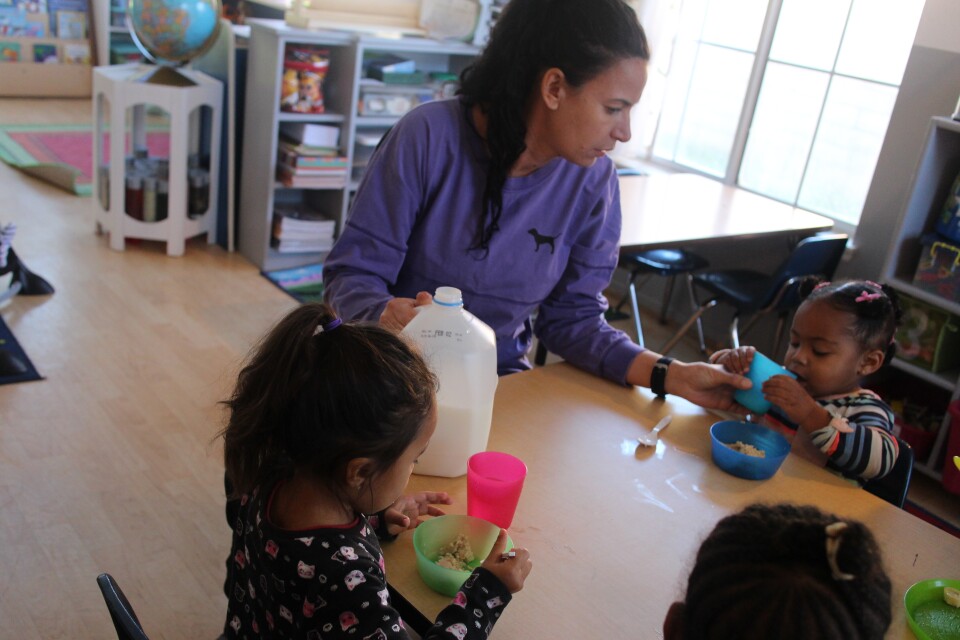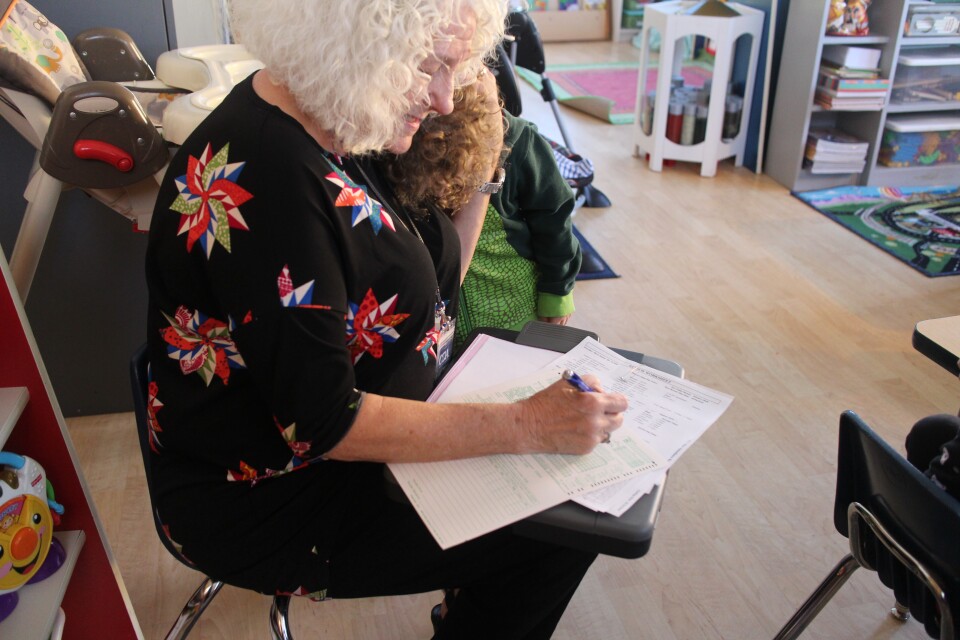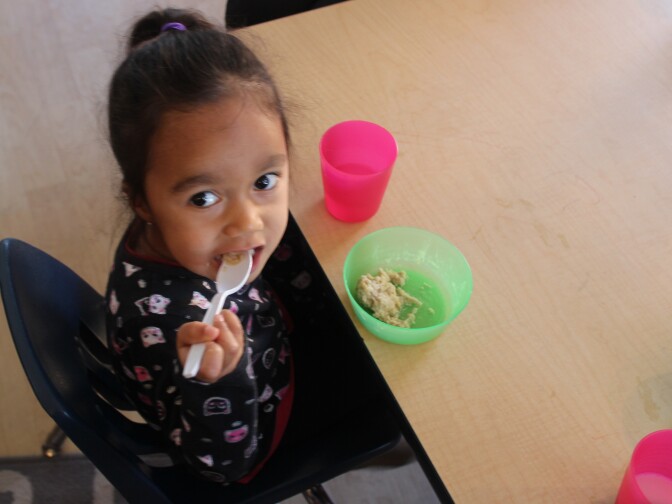Truth matters. Community matters. Your support makes both possible. LAist is one of the few places where news remains independent and free from political and corporate influence. Stand up for truth and for LAist. Make your year-end tax-deductible gift now.
This archival content was originally written for and published on KPCC.org. Keep in mind that links and images may no longer work — and references may be outdated.
Kids in child care are losing access to a healthy food program
It's snack time at Jessica Horn's home day care in Riverside and the preschoolers are anxious to dig in. On the menu: oatmeal with blueberries or sliced bananas.
It's a yummy mid-morning treat, but it also meets the nutritional standards of the federal Child and Adult Care Food Program. Like in many child care settings, these children do not bring food from home. Horn receives a small reimbursement for each child who eats a meal – 74 cents for this snack, a buck or two for lunch or dinner. It doesn't sound like a lot, but it helps her to pay the grocery bill for her small business.
"Without it, I think we would struggle to maintain the quality we have," said Horn. "It would be very challenging."
On any given day in California, more than 200,000 children receive a free or reduced price meal in all kinds of child care settings, including Head Start and state preschool. The goal of this entitlement program is to make sure kids are eating healthy meals instead of sugary cereals and salty chips and to pave the way for healthy eating as they grow up. But over the decades, participation has dwindled and many children who could benefit are not being reached. Advocates want the state to chip in more so providers will join.

In Riverside County, about half of licensed home day cares and a third of child care centers operate the food program, which is in line with state participation rates.
During the third week of March, the National CACFP Sponsors Association works to raise awareness about the program and recruit providers.
"There are children here in our own country who need food and this is one way to get it to them because [some are] at the child care center 12 hours a day," said Senta Hester, president of that group.
The Child and Adult Care Food Program, which also serves a small number of adults in day care, was started in 1968 by the US Department of Agriculture. The entitlement program serves more than 4 million children nationwide, compared to the National School Lunch program, which provides free and reduced meals for 30 million students. A majority of the children, and the providers themselves, are from low-income households.
"Just like with school meals families really benefit," said Elyse Homel Vitale, senior advocate with the California Food Policy Advocates. "It’s a way that they can save dollars and their kids has access to healthy meals."
It's a meaningful support for parents in a state where one in five children live in poverty.

Participation in the food program plummeted after 1996 when a major change was made to the way family child care homes were reimbursed. Providers serving children from homes with moderate incomes saw their checks cut in half – not enough to fund the healthy meals. Between 1996 and 2016 the number of family child care homes participating in CACFP dropped by 44.4 percent, according to the Food Research & Action Center.
And, in California, there’s another factor. After supplementing the program for decades – chipping in an extra 16 cents for each meal – that contribution was cut in 2012, after the recession.
Between 2010 and 2015, 200,000 children lost access to the program, according to an analysis from the California Food Policy Advocates.
Advocates have for years asked lawmakers to restore the state contributions to the program and match what schools get – 23 cents per meal. At an Assembly Budget Subcommittee on Education Finance on Tuesday,advocates from across the state made the request again and are hoping to see the funding back in the state budget in June.
"It only makes sense to start the investment a little earlier at that really critical time when they need the best nutrition they can get," said Homel Vitale.
New meal patterns were rolled out last fall to include a "greater variety of vegetables and fruit, more whole grains, and less added sugar and saturated fat."
"It is important that children learn how to eat when they’re little so when they grow up they’re eating nutritional meals, too," said Karen Kiernan, who works as a monitor through the program through Child Development Associates, a local sponsor for home day care providers.
To maintain meal quality, monitors like Kiernan visit child care centers and home day cares three times per year (twice unannounced) to make sure providers are meeting the requirements.
"Every now and then we find they’re not serving what they’re supposed to be," said Kiernan, who has been a monitor for 30 years. "We give them technical assistance and training and then I go back within a couple of weeks to see how they’re doing."

The additional monitoring and the required daily logging of meals are factors that keeps some providers away from the program – perceived as an administrative strain for providers who are already stretched. It hasn't been an issue for Horn, who has been with the program since she started her home day care 25 years ago.
"You have more monitoring, but along with monitoring you also have more assistance and classes and training," said Horn. "I think the more resources you have the better you are."
This post has been updated to correct the name of the Food Research & Action Center.











